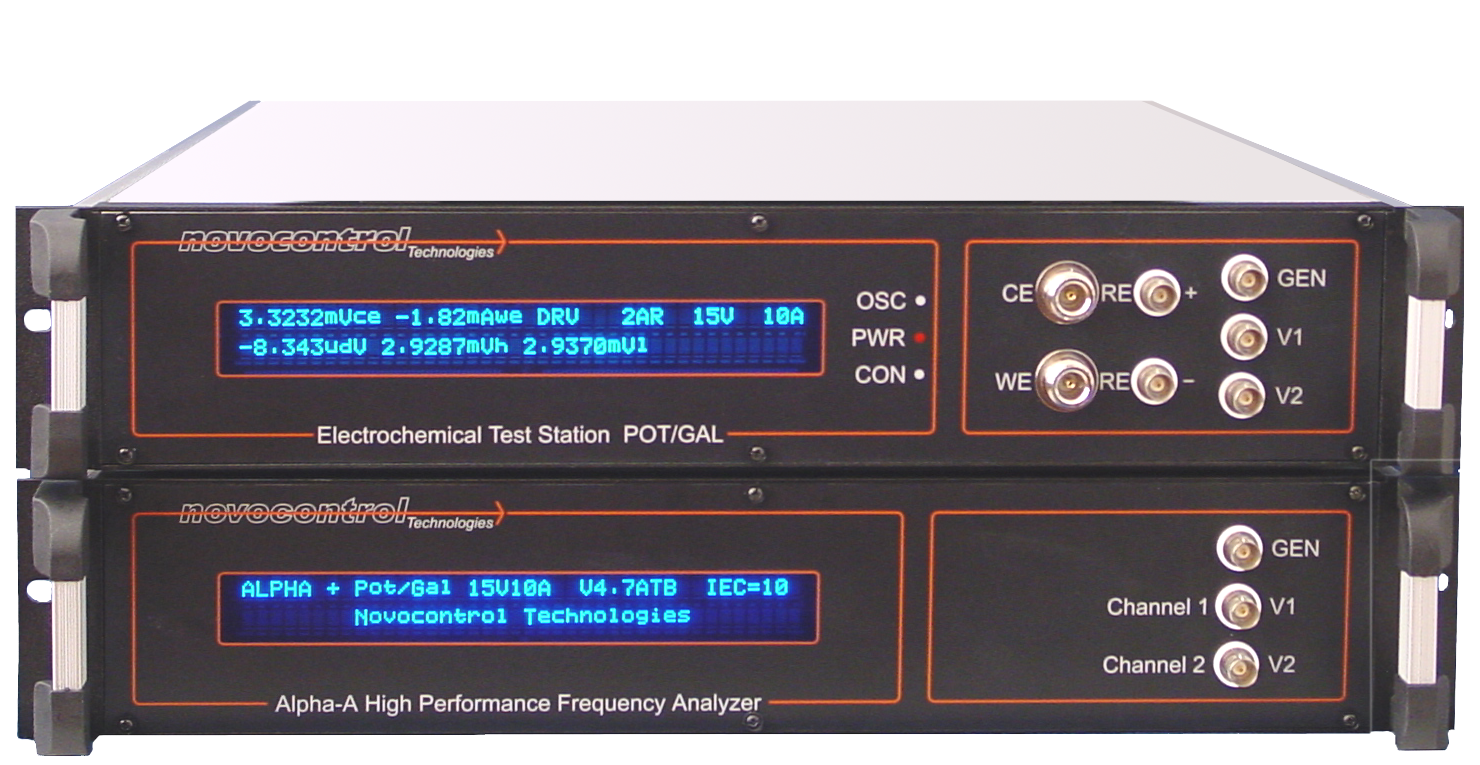Alpha-A analyzer
Broad frequency range from 3µHz to 40 MHz including low frequencies for characterization of dielectric relaxations and electrochemical effects

Most impedance analyzers exhibit low-frequency limits higher than some 10 Hz. This is sufficient for many technical applications as the impedance at low frequency is often constant at low frequencies and therefore does not yield new information.
Many materials, however, show strong frequency dependence at very low frequencies down to the mHz range or even lower. The low-frequency response contains a substantial amount of additional information unavailable from the "high frequency" spectra above 10 Hz. This especially applies to dielectric materials, electrochemical systems and generally all high impedance samples.
Dielectric Materials
The main effect measured in dielectric materials is the relaxation dynamics of
polar molecules. Relaxation times range from some picoseconds to
practically infinite (like e.g. years). This corresponds to frequencies
from 100 GHz to nHz. Since the entire frequency range may contain important
information, the instrumental frequency range should be as broad as possible.
Dielectric samples require in addition high phase accuracy
and wide impedance range.
Electrochemical Systems
In these systems charge transport is typically dominated by mobile ions. In practice, technical systems with e.g. electrolyte to metal, electrolyte to membrane or electrolyte to insulator systems for batteries, fuel cells, paints or corrosion analysis are important. At the electrolyte borders, interface polarization effects are created due to ion accumulation involving slow processes. This results in low frequency dependence of the measured system impedance related to the structure of the interface region and corresponding charge transport processes.
High Impedance Samples
As a general electrical property, all systems with sufficiently high resistance show low frequency dependence. This is because any insulating system can be modeled in good approximation by an equivalent circuit of a frequency dependent resistance R and capacity C. The capacity is at least a stray capacity in the pF range. This circuit behaves like a Debye relaxator with a relaxation frequency of
fr=1 / (2π× R×C) .
E.g., for C=1 pF and R=1 TΩ,At low frequencies, at least one signal period has to be measured. Therefore, measurement time increase linearly with decreasing frequency. This results in a practical limit for low frequency measurements. E.g. a typical frequency sweep down to 1 mHz may last about 3 hours, a 0.1 mHz sweep requires 30 hours which still may be acceptable. Frequencies below 0.1 mHz are rarely used due to the long measurement times involved. Nevertheless, it is important that the analyzer can create significantly lower frequencies in order to have sufficient low frequency resolution. E.g. the Alpha low frequency limit of 0.003 mHz results in 3% frequency resolution at 0.1 mHz.
